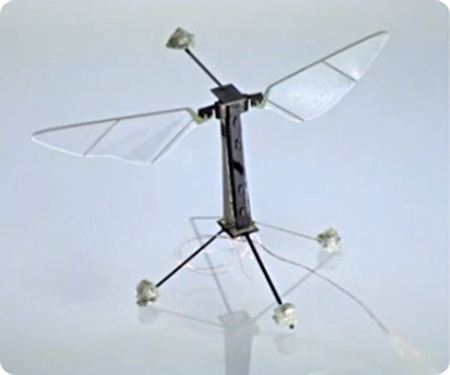Insect Drones versus Marketing Hype
 If you have seen the image of the robot mosquito, it looks very impressive. Various websites have described it as being perfectly camouflaged. It can spy on you without you even realizing that it is not an insect. There’s just one small problem. It is not real.
If you have seen the image of the robot mosquito, it looks very impressive. Various websites have described it as being perfectly camouflaged. It can spy on you without you even realizing that it is not an insect. There’s just one small problem. It is not real.
It is not clear what organization created the original image, but the notion that this robot mosquito is operational has been debunked on fact-checking sites such as Snopes and Hoax or Fact.
There is no question that such technology is being pursued. For example, the U.S. Army has funded BAE Systems to lead a program titled “Micro Autonomous Systems and Technology (MAST) Collaborative Technology Alliance.” BAE Systems has an image of a similarly impressive-looking insect-sized drone. This research effort was covered recently by Fox News.
However, as has been parodied endlessly by Scott Adams in his comic strip Dilbert, marketing departments can often be quick to show really cool-looking images of what the product might look like after the engineers have overcome innumerable technological hurdles. Oftentimes the final result is a far cry from the original artists renderings.
For the time being, at least, such is the case with the insect drones. Just getting a tiny drone to fly by flapping its wings turns out to be incredibly difficult. Researchers at Harvard University’s Microrobotics Laboratory have succeeded but their state-of-the-art prototype would not fool anyone into thinking it is an actual insect. Within the engineering community, Harvard’s achievement of controlled flight of an insect-scale robot (it’s called “RoboBee”) using insect-like wing flapping, was nothing short of spectacular. However, it is quite clear that there remains an enormous technological gap between the marketing hype (robot mosquito) and the reality (RoboBee).
If an impressive-looking drone is only seen in still images, there is a very good reason. It’s not real.
Note: An excellent article on the subject of insect drones was published last year by Popular Science.
